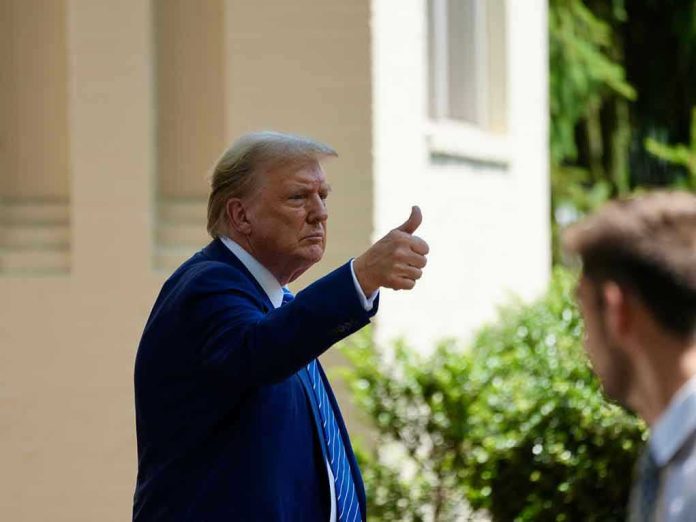
When a president orders the immediate testing of nuclear weapons, the world’s balance teeters on a knife’s edge and every American’s sense of security gets a wake-up call.
Story Snapshot
- Trump’s directive to restart nuclear testing marks a dramatic policy shift with global impact.
- The announcement is a direct response to foreign nuclear programs ramping up their own tests.
- The move reignites debates about deterrence, diplomacy, and the risks of nuclear escalation.
- Questions swirl about national security, technological readiness, and the future of arms control.
Trump’s Nuclear Testing Order: The Immediate Fallout
President Trump’s public instruction to begin nuclear weapons testing “immediately” signals a break from decades of restraint. The Department of Defense received orders in response to intelligence about foreign powers—most notably Russia and China—resuming or intensifying their own nuclear test programs. This decision does not occur in a vacuum; it reverberates through diplomatic channels, military planning rooms, and the anxious minds of American allies. The announcement, made in a terse statement, instantly reignited questions about the motives and risks behind reversing a policy that had held since the early 1990s.
For readers who recall the Cold War’s shadow and the tense optimism of arms reduction treaties, Trump’s move is more than political theater—it’s a seismic shift. The United States has abstained from live nuclear testing since 1992, relying instead on computer simulations and subcritical tests to maintain the credibility of its arsenal. This new directive challenges both the technical and ethical status quo, compelling experts to evaluate whether the current stockpile is reliable, and if additional tests would truly strengthen deterrence or simply erode decades of progress in global nuclear nonproliferation. Skeptics argue that renewed testing could provoke a cascade of similar decisions by other nations, raising the specter of an arms race at a time when international trust is already strained.
Strategic Rationale and Political Calculations
The administration’s rationale hinges on two pillars: competitive deterrence and national security. Officials point to intelligence suggesting adversaries are leveraging ambiguous testing regimes to advance their capabilities. For American conservatives, the argument resonates as a matter of muscular defense—if others are testing, the U.S. cannot afford to fall behind. Yet, critics view the announcement as a calculated political move designed to energize the base ahead of elections, rather than a strictly strategic necessity. The timing, coupled with an assertive tone, has drawn both support from hawks and skepticism from diplomats who caution that arms control agreements such as the Comprehensive Nuclear-Test-Ban Treaty (CTBT) may be irreparably harmed.
The policy’s implications extend beyond the Pentagon. Congressional leaders, especially those representing states with historic test sites, have begun weighing in with local and national security concerns. Questions about environmental impact, public health, and the wisdom of returning to a world where mushroom clouds could again punctuate the desert sky have surfaced in the first wave of responses. The debate highlights the friction between technological readiness—whether the U.S. can safely conduct such tests—and the broader diplomatic consequences.
Global Reaction and Open Questions
Allies and adversaries alike are recalibrating their positions in response to Trump’s announcement. European leaders, long advocates for nuclear restraint, have urged caution and called for renewed dialogue on arms control. Russia and China, though largely silent, are believed to be monitoring the situation closely, with analysts speculating that reciprocal tests could be imminent. The risk of miscalculation grows as communication channels fray and mutual suspicion deepens. Nuclear experts warn that the technical benefits of renewed testing may be marginal compared to the diplomatic costs and the dangers of reigniting proliferation pressures.
The open loop is clear: will this directive truly enhance American security, or will it ultimately trigger a global escalation that makes everyone less safe? As the dust settles from the announcement, lawmakers, scientists, and international observers are left to grapple with its ramifications. The coming months will reveal whether Trump’s order marks a temporary shift or a permanent transformation in the American approach to nuclear deterrence.
Sources:
Trump says he wants to resume nuclear testing. Here’s what that would mean













